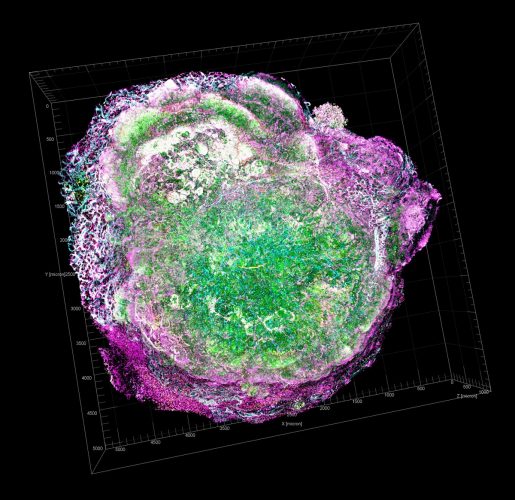The multitasking nature of SRC-3
The steroid receptor coactivator 3 (SRC-3/NCOA3) is a protein well known for its influential role in steroid hormone function and as a prognostic marker for aggressive human breast and other cancers. But that’s not all SRC-3 can do.

“SRC-3 is well-known for its role in cancer formation and proliferation, but we wondered what role it would play in immune T cells that form part of the tumor microenvironment,” said co-corresponding author, Dr. Bert O’Malley, chancellor and professor of molecular and cellular biology at Baylor. “A review of bioinformatics data revealed that SRC-3 is highly expressed in immune T regulatory cells (Tregs), and this encouraged us to pursue this study.”


“Tregs play a significant role by suppressing immune activity that can potentially harm the body,” said co-first author Dr. Bryan Nikolai, adjunct assistant professor molecular and cellular biology at Baylor and senior scientist at CooperGenomics. “For instance, Tregs are key to prevent autoimmunity, an immune response directed against normal tissues of a person, which can lead to severe disease.”
In addition, breast cancer and other types of tumors include infiltrating immune cells that can contribute to the control of tumor growth or, on the other hand, provide local immune suppression that would favor tumor growth. Treg infiltration has been experimentally proven in breast tumor biopsies and correlates with poor prognosis and reduced patient survival.
SRC-3 can help cancer grow

“We experimentally show that SRC-3 is significantly enriched in both murine and human Tregs,” said co-first author Dr. Prashi Jain, instructor of molecular and cellular biology at Baylor. “We used our small molecule inhibitor SI-2 to effectively inhibit SRC-3 in human Tregs. As a result, Tregs were less effective at inhibiting the activation of other immune cells that help in maintaining antitumor immunity.”

The O’Malley lab had previously shown that SI-2 eliminates SRC-3 in breast cancer cells and, consequently, inhibits tumor growth in a mouse model of breast cancer. “Now that we know that SRC-3 also is important in the immune system, I am excited to see whether our SRC-3 small molecule inhibitors might provide a dual benefit, eliminating cancer cells directly and also blocking the suppressive activity of Tregs, like killing two birds with one stone,” said co-author Dr. David Lonard, associate professor of molecular and cellular biology and member of the Dan L Duncan Comprehensive Cancer Center at Baylor.
“There is a great deal of interest in finding ways to inhibit Tregs that suppress the immune system,” said O’Malley, a member of Baylor’s Dan L Duncan Comprehensive Cancer Center. “We are excited about the possibility that our approach with small molecule inhibitors might lead to promising therapies in the future.”
We anticipate that, if we can remove the suppressive effect Tregs have in anticancer immune response with our small molecule inhibitors, then the immune system would be free to go after the tumor.”
The study appears in the journal Scientific Reports.
Other contributors to this work include David Cardenas, Brian York, Qin Feng, Neil McKenna and Subhamoy Dasgupta. The authors are affiliated with one or more of the following institutions: Baylor College of Medicine, University of Houston and Roswell Park Comprehensive Cancer Center, Buffalo, N.Y.
This work was supported by NIH grants (HD80818/HD07857) and Cancer Prevention and Research Institute of Texas grants (RP100348, RP101251 and RP170500). Further support was provide by CPRIT Core Facility Support Award (CPRIT-RP180672), P30 Cancer Center Support Grant (NCI-CA125123), NIH RR024574 and NIH S10 OD025251 (Union BioMetrica BioSorter) and by the Brockman Foundation.



